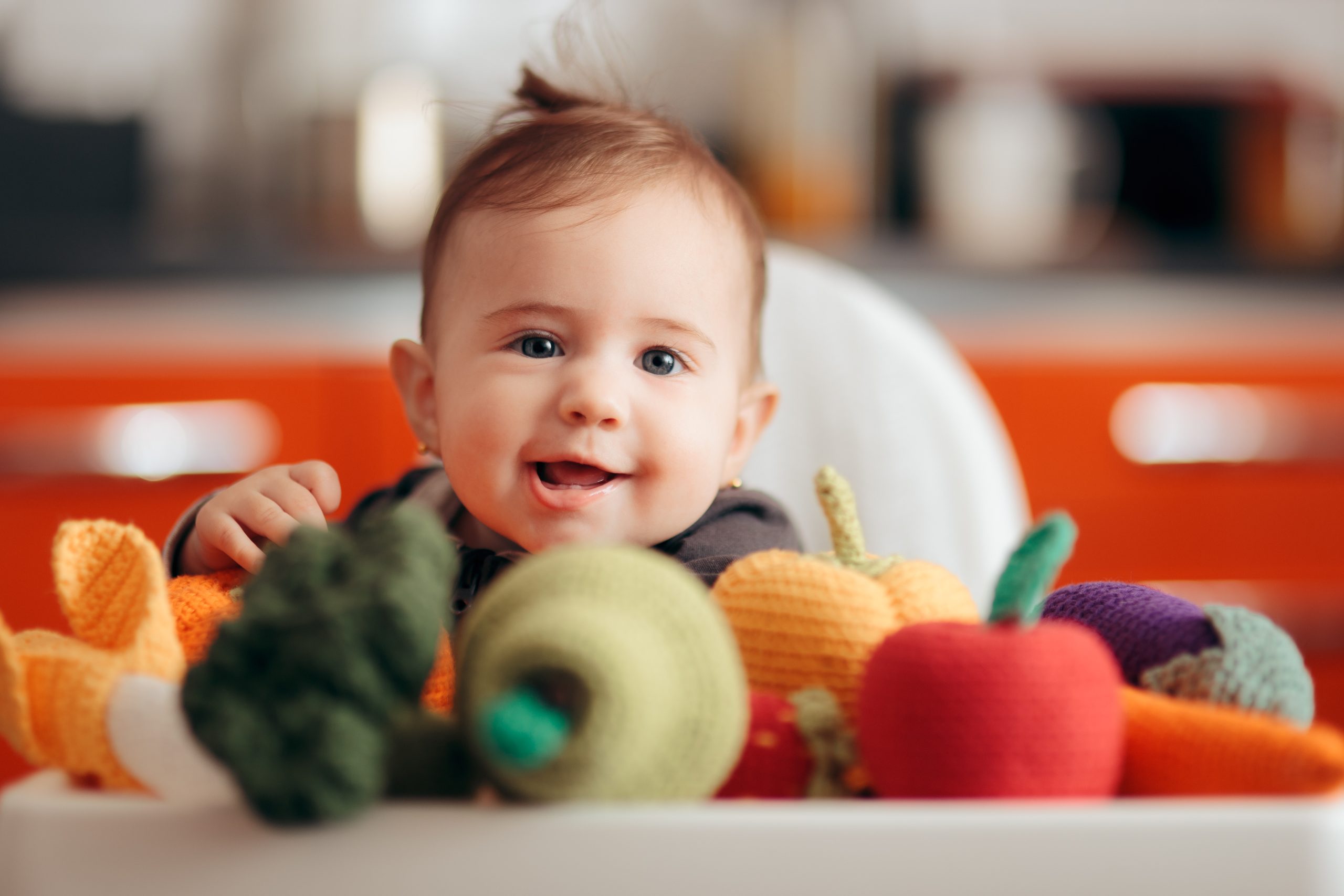For National Nutrition Month, we want to share advice for starting solids and making sure that your baby is getting all the nutrients they need. Starting solids is an exciting milestone for your baby, but it can also be messy and confusing. Read on to learn how to make the transition easier.
Babies can begin eating solids generally around 6 months of age. Prior to that, it is recommended that they be given only breastmilk and/or formula. Breastmilk has all of the nutrients your baby needs. After 6 months, it is still beneficial to continue breastfeeding until the first year or beyond, while feeding your child introductory foods.
Your baby will be ready to start eating solids when they can hold their head up and sit in an infant seat. They should also generally weigh at least 13 pounds and be able to swallow food. When you start feeding your baby solids, you may notice them spitting out some of the food, leaving a mess on their bib or high chair. This often happens because they’re not used to consuming anything thicker than milk or the taste of other foods. Over time, however, their taste buds will develop and their tolerance of different textures will grow.
To begin feeding, start with tiny spoonful amounts of baby food and gradually increase the amounts as your baby learns how to swallow solids. Patience is key here. Don’t feel discouraged if your baby turns away from the food or starts crying. If they refuse to eat, go back to breastfeeding or feeding them infant formula and try again another time. Eventually, your baby will learn to accept solids and will enjoy it!
What you feed your baby is also really important. There are many types of baby’s first foods to choose from, but you’ll want to make sure that their food includes nutrients such as iron, protein, vitamins, and minerals. Try giving them a variety of options to avoid picky eating later on. When babies begin eating solids, their food should be soft or pureed to prevent choking. Once they’re able to bring their hands and other objects to their mouths, you can give them soft finger foods to learn how to feed themselves. Finger foods should also be cut into small pieces to make it easier for swallowing.
Baby-led weaning is another approach to starting solid foods. This approach allows you to follow your baby’s lead and to watch for signs of developmental readiness and, when baby is ready, allowing them to self-feed. Cutting foods into “finger-size” slices that are made for grasping and food should be firm enough to pick up and hold, long enough that they can see a little portion sticking out of their hand and soft enough to gum or chew. Examples include soft ripe fruits such as banana, pear, avocado, kiwi and mango or strips of roasted/baked/steamed vegetables such as sweet potatoes, carrots and squash. Soft, shredded strips of meat that you can move your fingers through is also an option. Most babies will embark on their solid foods journey with a combination of these two approaches.
Some great first foods for babies include mashed fruits and vegetables like bananas, peaches, applesauce, sweet potatoes, and avocados, as well as grains like oatmeal and baby cereal. Protein options include meat, mashed eggs, yogurt, beans, and tofu. After your baby starts eating solids and there’s no special reason to be concerned about food allergies, you can gradually begin to introduce them to allergenic foods like peanuts, tree nuts, and shellfish. It is advised to keep 3 days in between new foods to ensure there are no signs of allergy to the food introduced.
Once your baby reaches 6 months, they can also be introduced to drinking water. Babies under 6 months get the water they need from breastmilk and/or formula. For babies under age one, 8 ounces of water per day is enough in addition to breastmilk and/or formula. Children under 12 months should not be drinking juice as there is no nutritional benefit at this age. Juice also increases the risk of tooth decay.
Additionally, you’ll want to avoid feeding your baby anything they can choke on, such as popcorn, nuts, and vegetables that are not mashed. You may notice your child gagging when eating baby food and this can be confused with choking. However, gagging is a normal reaction that occurs when your baby has taken in too much food or pushed it back into their mouth. The gag reflex keeps the food out of the wind pipe and prevents choking. If your child is choking, they will show signs of difficulty breathing. If this occurs, contact emergency right away or perform CPR if trained.
If you have any questions about introducing solids to your infant, please contact our office.




